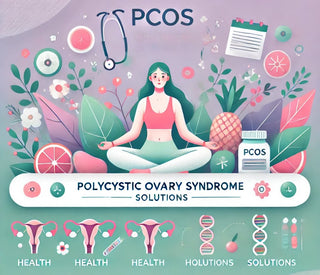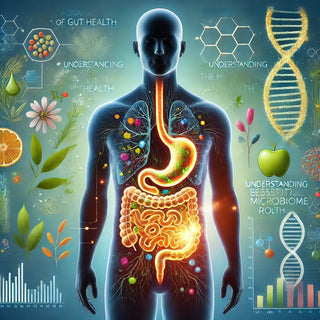CurcuWIN: the golden secret of Turmeric for Health & Wellness
Curcumin is a natural polyphenol of turmeric (the active compound in turmeric) and is universally known as the “wonder drug of life” and has a long history of medicinal applications; 5,000 (Ayurveda) and 2,000 (Atharveda) years, respectively.
Confused between Curcumin & Curcuwin? Here’s the difference:
-
Curcumin → This is the natural polyphenol found in turmeric. It’s the actual compound that gives turmeric its yellow color and most of its health benefits.
-
Curcuwin® → This is a branded, patented form of curcumin made to be more bioavailable (easier for the body to absorb). It’s essentially curcumin, but in a special formulation developed by a company.
Throughout ancient times in the Far East, turmeric was used for its anti-inflammatory properties and to treat inflammatory conditions of various organs, for liver and digestive tract problems, wound healing, and it has been a trusted home remedy across India and beyond. In the 1970s, the first research on the yellow polyphenolic pigment from the Curcuma longa L. (turmeric) rhizome known as curcumin and its possible health benefits was carried out.
In these and in later studies it was shown that curcumin has multiple therapeutic potentialities.
Everyday Benefits of Curcuwin®
When consumed in an appropriate, bio-available form it has been shown in various clinical trials to possess numerous biological attributes including anti-inflammatory, anti-oxidant and anti-cancer properties. It can also be considered as safe to ingest, exhibits no major toxicity, and only protects normal cells and organs at least in part.
Why are people around the world turning to turmeric supplements?
What are the health benefits of curcuwin and turmeric?
- Supports healthy digestion-helps soothe an upset stomach and balance gut health
- Promotes Joint & Muscle comfort- supports mobility and flexibility.
- Boosts natural defence- supports immune health and general wellness
- Healthy aging- research suggests curcumin helps protect cells from damage and may delay age-related decline. Acts as an antioxidant for a healthy skin.
- Liver Support- Promotes liver, gallbladder, and digestive health for improved gut function.
Curcumin vs Modern Medicine: A Recent Study
A 2023 study published in the BMJ compared the use of curcumin with Omeprazole ( a common stomach medicine) for people with functional dyspepsia: a chronic condition of recurring symptoms of an upset stomach that have no obvious cause and is also called “non-ulcer” stomach pain which is mostly associated with anxiety and depression.
The scientists compared three groups: curcumin alone, curcumin plus omeprazole and omeprazole alone. Results: Both worked equally well but curcumin had fewer side effects compared to Omeprazole, which can sometimes cause nutrient deficiencies or bone weakness when used long term.
Curcuwin® for anti-aging
Scientists are exploring curcumin for its role in slowing aging. How?
-
It helps reduce cell damage.
-
It supports natural processes like autophagy (removing old/damaged cells).
-
May improve energy and brain clarity with age.
This makes turmeric not just a spice for your food, but a long-term ally for wellness.
Where to Find Curcuwin® in India
The best turmeric supplements in 2025!
At FMI health, we bring premium global supplements to India. Our collection includes Curcuwin® products designed to support digestion, immunity, joint health, and healthy aging.
Curcuwin brings enhanced turmeric benefits offering support for immune system, heart health, joints and more,
Summary
Over the past half-century, a high number of clinical trials have been accomplished to address curcumin’s efficacy, safety, and pharmacokinetics. Curcumin has been administered in several formulations, such as capsules, tablets, powder nanoparticles, liposomal encapsulation, and emulsions.
Curcumin supplementation is attracting significant cross-over interest from the nutraceutical and pharmaceutical industry.
People also Ask - FAQ's
Is Curcumin the same as turmeric?
Curcumin, is the major component of turmeric, and it gives turmeric the special yellow colour.
How is curcuwin supplement different to turmeric?
Turmeric is a whole spice whilst Curcuwon is an advanced formulation and particularly superior due to the bioavailability ( absorption)
What is the best turmeric/ CurcuWIN tablet to take?
At FMI health, you will find CurcuWIN from Allergy Research Group, known to support joint, bone and muscle health by reducing inflammation and oxidative stress and Baron joint with CurcuWIN, that provides specialized nutritional support for bone health and connective tissue.
What is the correct dosage for curcuwin and how should it be taken?
All supplements will carry the dosage information. If in doubt, please speak to a healthcare provider. At FMI health, you can find plenty of guidance, resource and professional assistance as appropriate.
Where can I buy Curcuwin and what Curcuwin brand is the best quality?
One product that is also vegetarian is Allergy Research Group, curcuwin 500, it has 46 x better absorption with UltraSol technology for effective delivery. Lower dose, higher effect due to improved absorption. Not indicated for pregnant women, this product can be found on FMIhealth.com.







